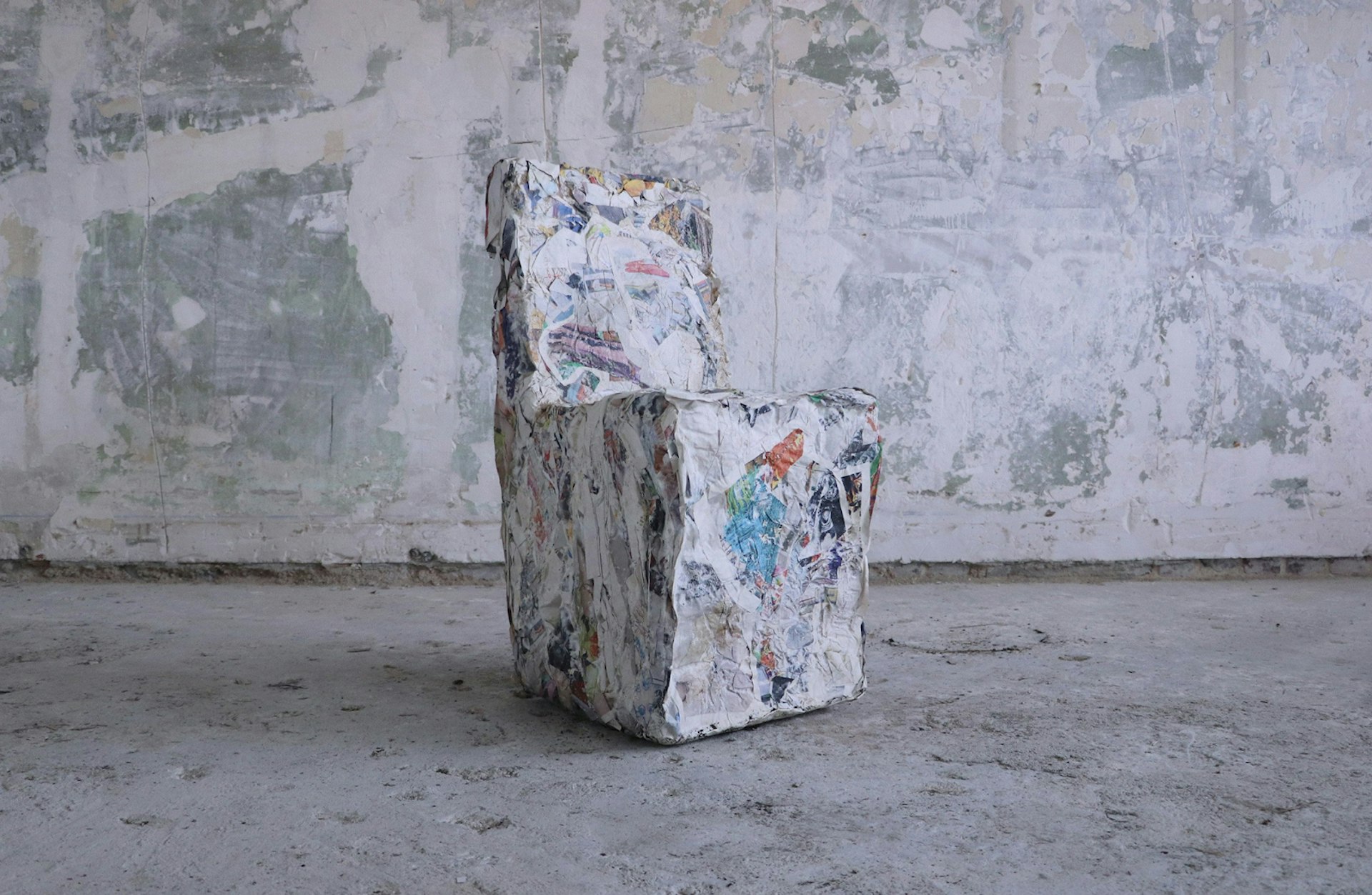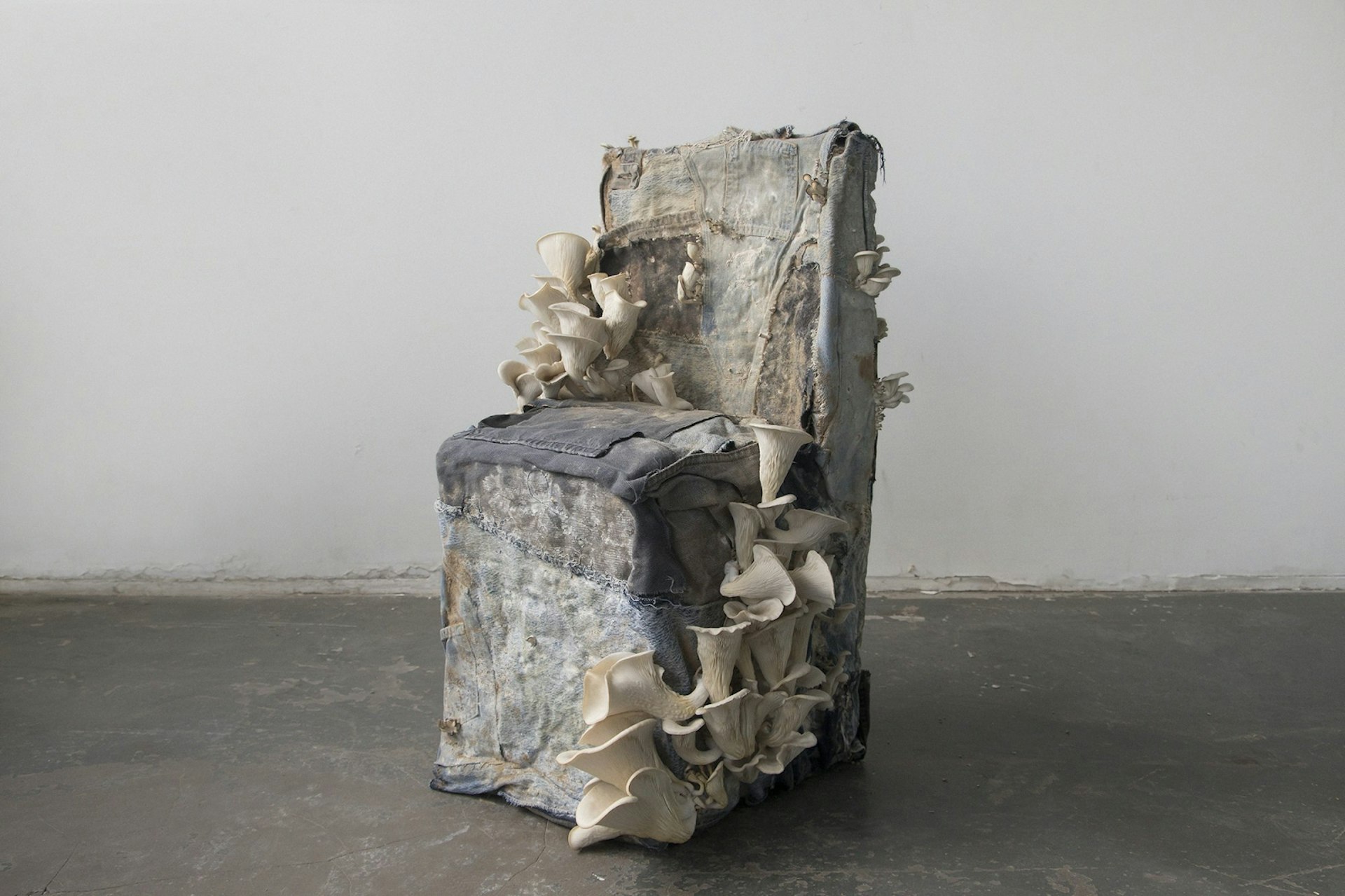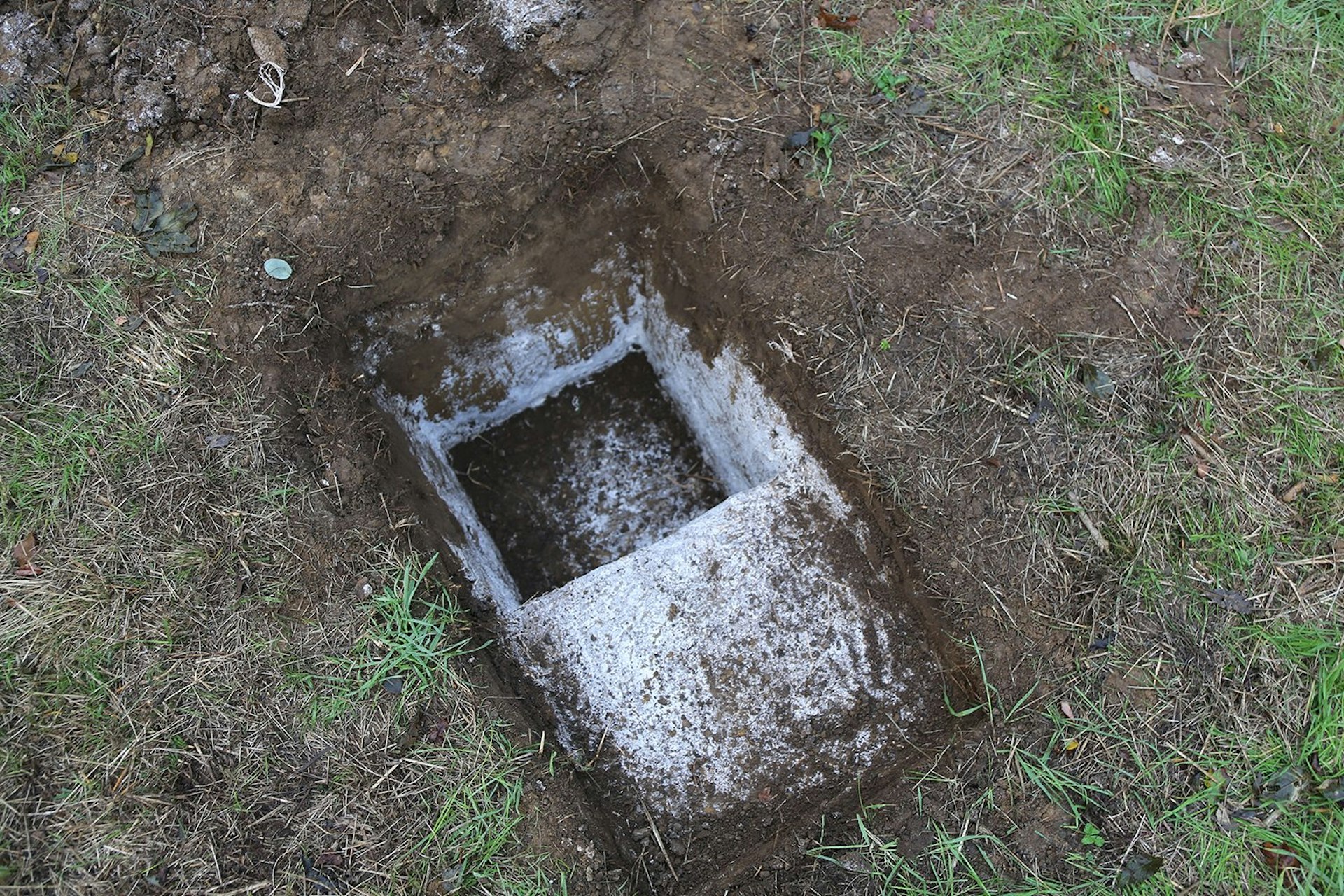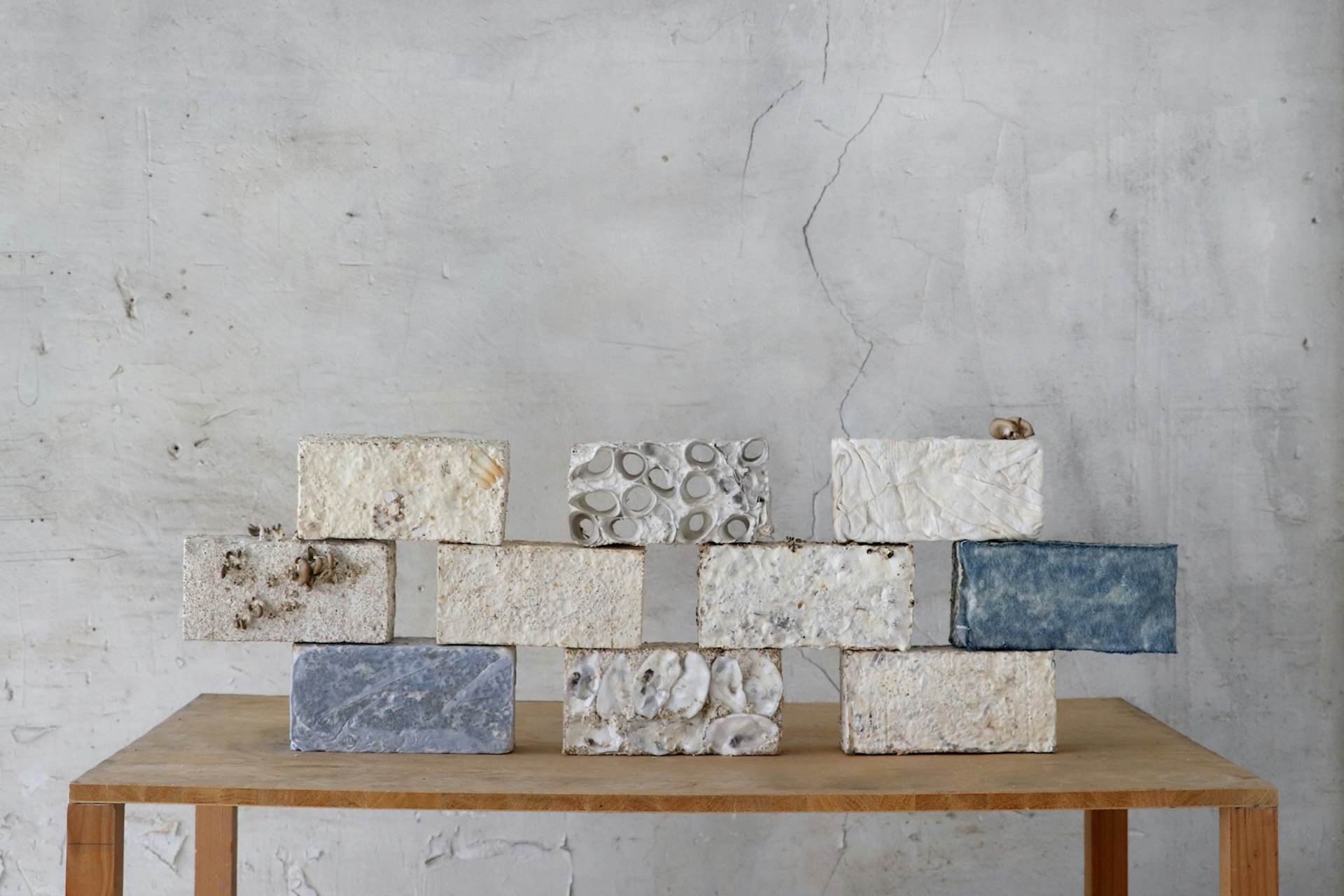June 15, 2024
The Parisian Studio Growing the Future of Biodesign
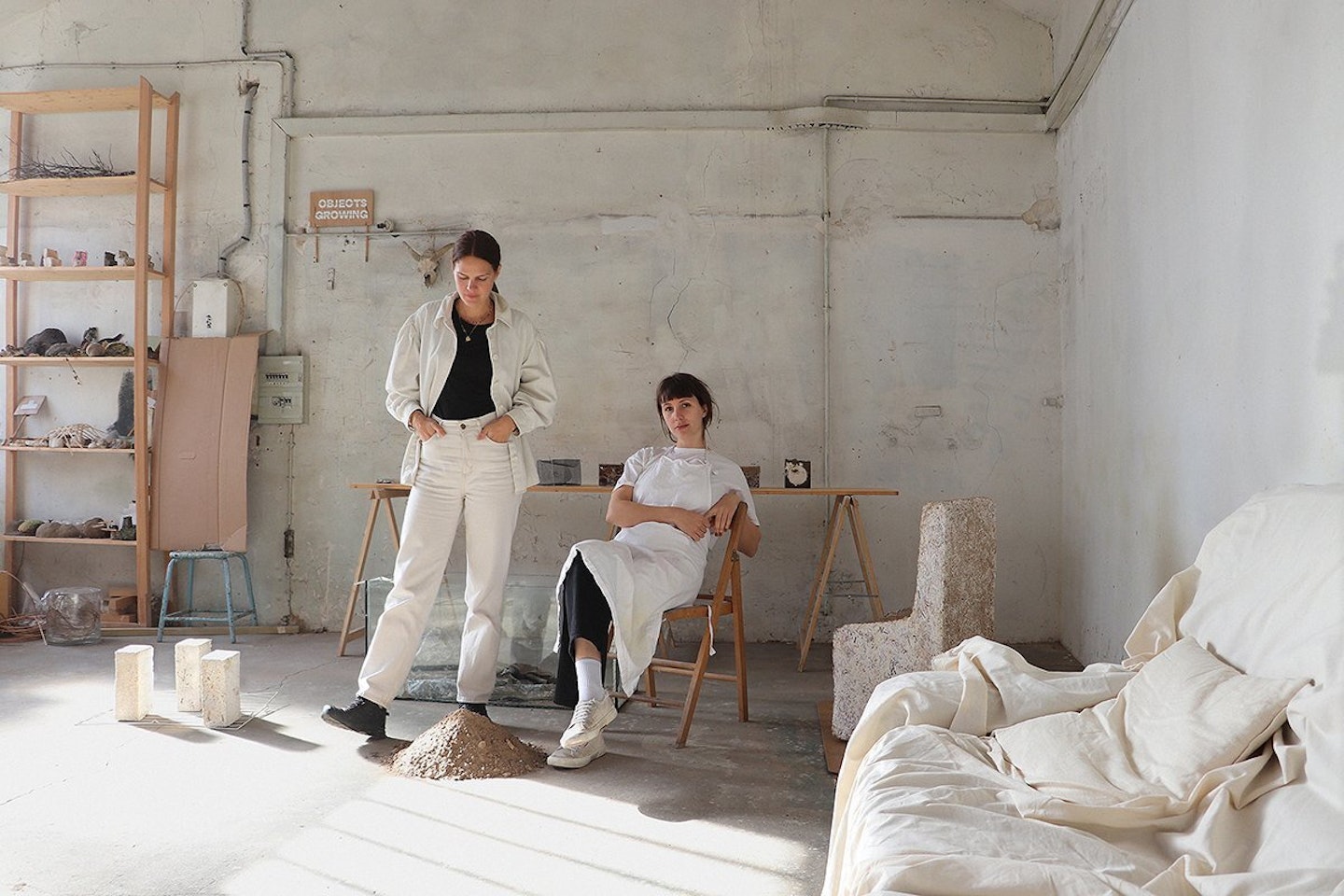
A white mass of fungi root sprawls below the human world. Called mycelium, it grows in thriving, labyrinthine networks underground. It takes an artist’s eye—and hand—to realize what feats this organic substance is capable of.
Fortunately, Aléa has always seen the world differently. Led by Miriam Josi and Stella Lee Prowse, the Paris-based atelier and material-research studio uses earthen molds to explore how mycelium can be utilized as a sustainable, ephemeral substance. Their work is a love letter to a misunderstood medium and its potential to change the world of design. The innovation is clear in their language: Miriam and Stella don’t build a chair—they grow one.
As designers and engineers seek out sustainable practices, mycelium has emerged as a viable alternative to many synthetic, petroleum-based materials. The art world, too, has discovered it. Renowned for its industrial-level strength, lightweight structure, and resistance to fire and weathering, mycelium is also nontoxic and fully biodegradable. Though researchers are just beginning to scratch the surface of the material’s potential, they hope it remains a source for innovation for many years to come.
We caught up with the Aléa team to learn more about the unpredictable artistry of fungus and the fascinating future of biodesign.
The Story of Aléa’s Nature-Inspired Design
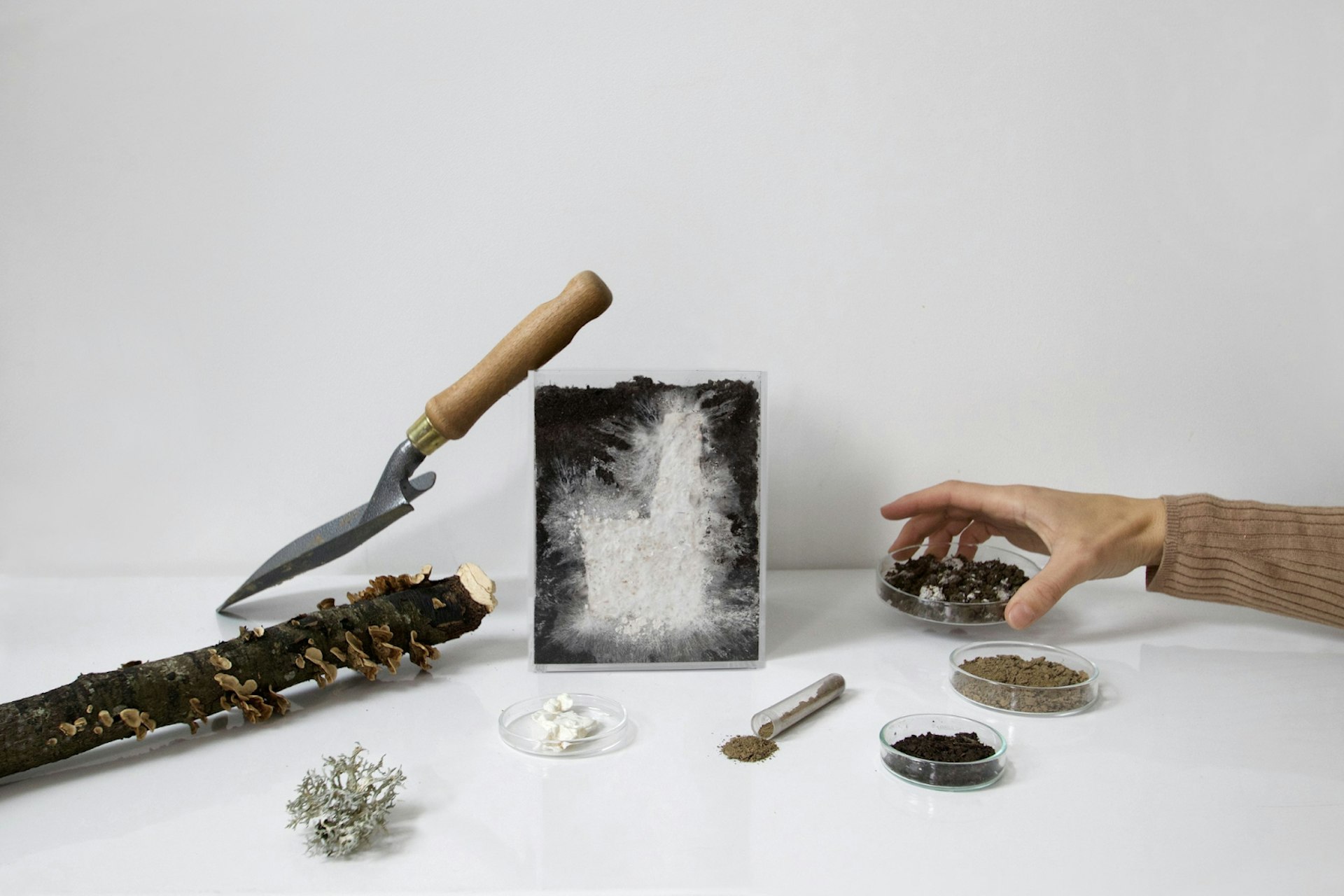
Tell us a little bit about your background. What inspired you to start working with mycelium?
Stella: Miriam and I met in New York during our undergrad at Parsons. After a few years, we met back up in Paris for our masters in Nature-Inspired Design. We were interested in merging our relationship to nature with our design process.
Aléa was born from a desire for an alternative to the materials and processes taught in design school—the resins, the intense machinery, the product-focused outcomes. Working with mycelium really intrigued us, and we started to ask ethical questions about working with living organisms and the ways we work with them, from the tools and spaces to the environments where we practice.
Working with mycelium usually takes place in sterile laboratories that separate the organism from nature. We asked this question: Why can’t we practice myco-fabrication (the process of using mycelium to make new materials) in its natural environment?
Transforming Mycelium Into Biodesign
Dirty chair N. 7. Photo courtesy of Aléa.
You create chairs out of soil. That must be a very fascinating process. What does the process of creating objects with mycelium look like?
Stella: Our project Back to Dirt uses soil as a mold to grow objects from mycelium and waste substrates. A week after graduating from our master’s program, we were invited to Domaine de Boisbuchet, in the center of France, where we grew our first chair for a residency. Soon after, we were invited to run workshops there.
Miriam: Because we are based in Paris and don’t have access to a lot of land, we started to look into excavated soils from the area, such as metro sites and construction sites. We grow mycelium in our studio by packing that soil in a glass tank. It’s a middle ground between a sterile lab environment and the outdoors—the natural environment of mycelium. And we have some control in seeing how the objects are grown, because in the glass tank you can see the structure and growth. You can see when the objects turn white, which is when they’re ready to be taken out. It’s hard to identify that when working in the field.
Dirty chair N.8, 2023. Denim scraps and mycelium grown in soil and glass tank. Photo courtesy of Aléa.
How do you approach working outside when the weather is unpleasant? Are some conditions more favorable for mycelium growth than others?
Stella: We lose a lot of control when working outdoors, depending on the weather and the seasons. But that’s also kind of an exciting element: how much control we’re willing to relinquish in order to find that middle ground between an ultra-sterile factory and outdoors.
Right now we’re building an outdoor laboratory that’s half-enclosed. It has walls and shade and the ability to contain moisture, but can also be opened to the elements if you need it. [It] allows us to sometimes protect the growing pieces and sometimes not.
Miriam: Growing mycelium outdoors is also a much more resilient process than working with a plastic mold, because with a plastic mold the risk of contamination is really high. You have to be really clean, wear masks and gloves, and sterilize everything. Depending on the temperature, the process just takes more or less time.
Stella: The weather plays a big role. In the winter it’s slower, but it grows really well in the fall. Interestingly, the size of the object doesn’t really affect growth.
Miriam: It also depends on how much mycelium is added to the substrate. But the will of the mycelium is really hard to speed up.
‘The Beauty in the Ugliness’ of Sustainable Art
Soil mold after chair harvest: Mycelium growing outdoors. Photo courtesy of Aléa.
What is your vision for mycelium? What applications for the material are you targeting?
Stella: We came into this process as product designers. We made a chair first because it’s a classic product-design object. Over time, we started to think more about applications. We value the ephemerality of the material, and want to see it as a positive rather than a drawback. For example, we think about packaging. We want to think about architecture. Right now, we’re building a pavilion made from mycelium panels.
Miriam: We’re more interested in the process, creating unique or one-of-a-kind series. Production of objects has never been our goal. But we’re also exploring building blocks with open-ended applications. They’re smaller objects that could be bookends or toys. This project is more about appreciation of the material rather than giving it a specific function.
Whenever you see widespread success of a biomaterial, it’s because it’s been able to achieve a certain aesthetic that people want. How do you approach aesthetics in your work?
Stella: We talk about that quite a lot, about the ways in which biomaterials try to mimic the aesthetics of what we’re used to and what petroleum has provided. Even mycelium leather is mimicking a material. In doing so, it’s usually printed or coated, and not really embraced for what it is.
We’re trying to challenge this relationship to aesthetics and think about what mycelium really looks like as a textile. It’s not second-best, it’s its own new thing. As part of our process, we recognize the limitations of the material. We also consider our personal bias.
But we’re interested in embracing a new aesthetic of biomaterials rather than trying to make it look like something that it’s not. In doing so, we leave our chairs dirty. We try to see the beauty in the ugliness.
Miriam: We’ve found that the most beautiful and exciting outcomes are often unplanned. We get asked a lot about aesthetics, because the way we work and document our projects is a bit different than other biomaterial studios. This is an ongoing conversation for us.
Our eyes are trained to [appreciate] a certain aesthetic, and it’s almost like we’re trying to untrain them—so we can see a different kind of beauty.
The Next Frontier of Biodesign
Waste materials assembled by mycelium, 2022. Photo courtesy of Alea.
Most of your objects are white. Is that the natural color of mycelium?
Stella: Yes. That’s the natural color, and it’s quite hard to dye it. Usually it’s white and soil.
Miriam: Mycelium turns every material into white. We achieve color by using shredded paper and magazines or colored textiles. The mycelium will feed on it and turn some of it white, but often synthetic color stays. We see unlimited potential to experiment with different colors and textures. It’s a really underexplored territory.
How do you see your work evolving?
Stella: We define three pillars of our practice: education, research, and applications—plus collaborations. We’re starting to do more collaborations, looking for the application for mycelium’s ephemerality. We think it’s an underexplored and exciting application: architecture, events, and things that don’t need to last forever, where mycelium might have potential.
Miriam: The transmission part is also very important to us—we’re all about sharing our process and our research. We get contacted by a lot of students. It’s very beautiful, because we feel like they really resonate with our approach, which is very different from what’s conventionally taught in industrial design schools.
This is really just the beginning. We really want to dedicate time to this research. It’s applied research, because we work with scientists, but we’re not scientists. We’re excited—we think there’s so much potential.
Written by Reilly Blum, VAWAA team
Explore all mini-apprenticeships, and be sure to come say hey on Instagram. For more stories, tips, and new artist updates, subscribe here.
